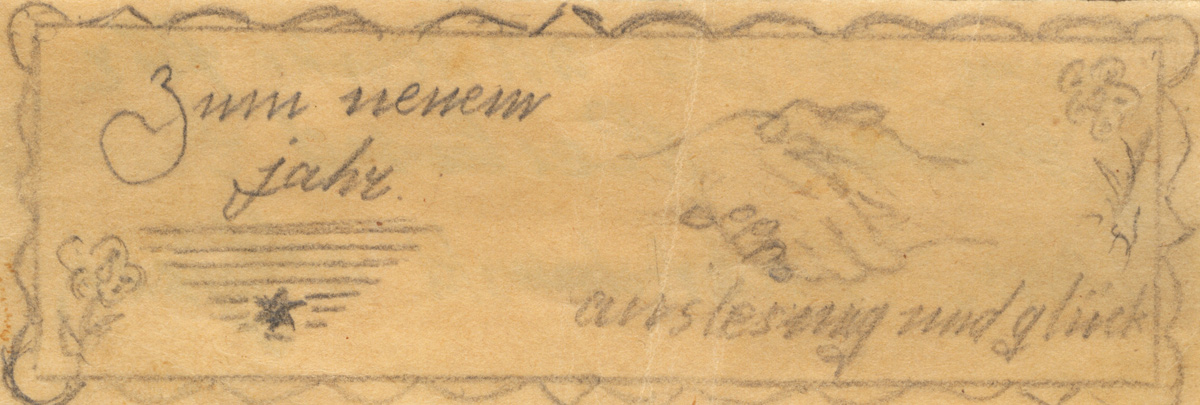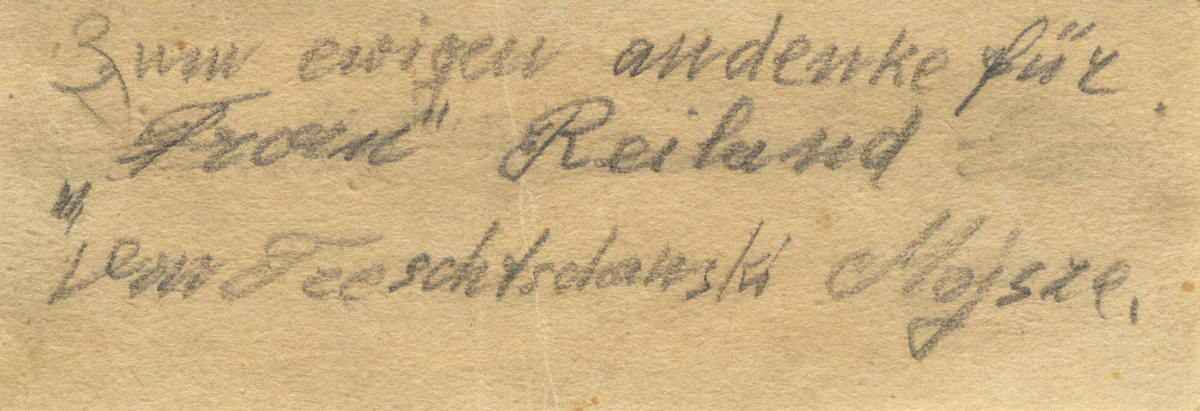New Year's card made by 9-year-old Mojsze Treschtschanski for his caregiver, Emilie Reinwald, September 1943
In August 1943, some 1,200 children were deported from the Bialystok ghetto to the Terezin ghetto, including Mojsze Treschtschanski (b. 1934) and his brother Yudel (b. 1935). In Terezin, Mojsze made a New Year's card for his caregiver Emilie Reinwald, a widow who had volunteered to take care of children who arrived from Bialystok. Emilie's daughter Hana was Mojsze's age, but lived with relatives outside the ghetto as her father was not Jewish. In October 1943, the "Biaystok children" were deported to Auschwitz together with the adults who had taken care of them. The deportees, including Mojsze, Yudel and Emilie, were murdered on arrival.
Before her deportation, Emilie managed to smuggle the New Year's card out to her daughter in Prague, thanks to the help of a Czech policeman who worked in the ghetto.
The Bialystok Children
At the time of the liquidation of the Bialystok ghetto in August 1943, some 1,200 children were deported from the ghetto by train to Terezin. They were accompanied by several adults, medical staff and caregivers. Some of the accompanying families had entry permits to Eretz Israel (Mandatory Palestine). After about two days of travelling, on 24 August the train reached the Bohusovice station near Terezin. The chaperones and their children were separated from the rest of the children and sent to Auschwitz, where most of them were murdered.
The other children were brought to Terezin. They were given food while still on the train, and then underwent disinfection. The children were assigned new caregivers, who were chosen from the medical and welfare personnel in the Terezin ghetto, and transferred to a separate area of the ghetto where all contact with them was forbidden. The other ghetto inmates were under the impression that these children and the individuals looking after them would be sent to Switzerland or Eretz Israel.
On 5 October 1943, six weeks after their arrival, the children were taken out of their barracks and led on foot to the Bohusovice railway station, some 3 km from Terezin. As with their arrival, their departure was shrouded in secrecy. 1,196 children and 53 caregivers were deported that day to Auschwitz, and arrived there two days later. As far as is known, all the children and their caregivers were murdered on arrival.


